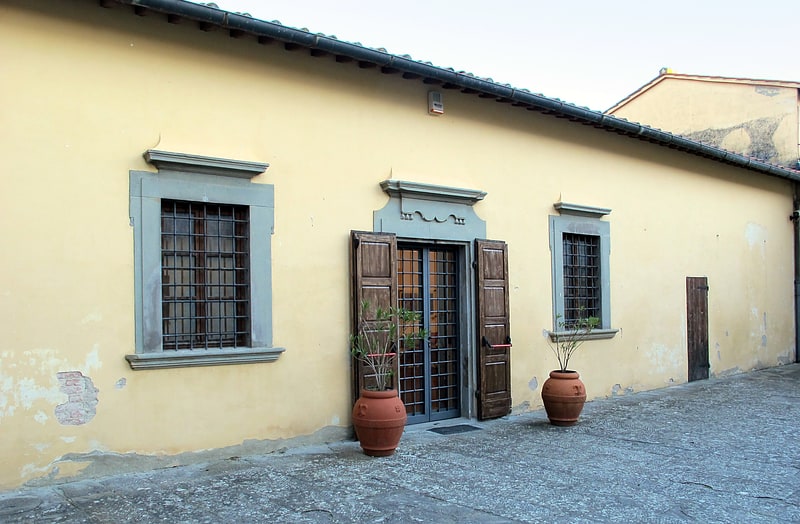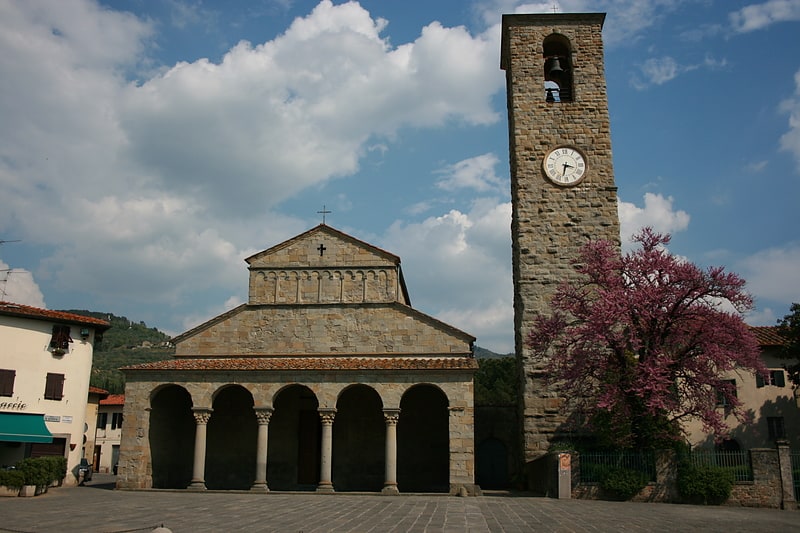Discover 4 hidden attractions, cool sights, and unusual things to do in Reggello (Italy). Don't miss out on these must-see attractions: Vallombrosa Abbey, Museo Masaccio, and Chiesa di San Jacopo. Also, be sure to include Pieve dei Santi Pietro e Paolo in your itinerary.
Below, you can find the list of the most amazing places you should visit in Reggello (Tuscany).
Table of Contents
Vallombrosa Abbey

Also known as: Abbazia di Vallombrosa
Abbey. Vallombrosa is a Benedictine abbey in the comune of Reggello, about 30 km south-east of Florence, in the Apennines, surrounded by forests of beech and firs. It was founded by Florentine nobleman Giovanni Gualberto in 1038 and became the mother house of the Vallumbrosan Order.
It was enlarged around 1450 and took on its current appearance at the end of the 15th century. In 1529, after the looting by Charles V, the east tower was built. Between 1575 and 1578, Galileo Galilei was educated there and then withdrawn by his father, before taking orders, and moved to Pisa to study medicine. In the 17th century the walls were erected, and in the 18th century the fishing ponds dug. Today the monastery is open to tourists and its "Antica Farmacia" sells local produce such as herbal teas and liqueurs made following antique recipes. Among these is the rare and legendary Dry Gin of Vallombrosa.
On 7 October 1096, Pope Urban II addressed the congregation of Vallombrosa, imploring the religious amongst them to support the cause for a crusade to the Holy Land. In particular in this sermon, he cited the need for knights, who could "restore the Christians to their former freedom".1
Largely because of his poetic reference to the "autumnal leaves that strow the brooks, in Vallombrosa" in Paradise Lost, John Milton is supposed to have visited the monastery and, according to a plaque erected during the Fascist era, actually stayed there. Though this is unlikely, the notion that he did so encouraged many later travelers to visit the place, including William Beckford, J. R. Cozens, William Wordsworth, Crabb Robinson, Frances Trollope, Mary Shelley, Elizabeth Barrett Browning, and Friederich Nietzsche. The Anglo-Italian monk, Enrico Hugford, became Abbot of Vallombrosa in 1743 and fellow Catholic, John Talman, seems to have visited even earlier.
Derek Walcott also mentions Vallombrosa in chapter 33 section 2 of his Omeros. Derek Walcott has allusions to several historical moments and other literary works throughout the Omeros, and Shmoop suggests that this reference was inspired by John Milton.
Partly thanks to the influence of the pioneering American ecologist and author of the 1864 Man and Nature, George Perkins Marsh, the Istituto Superiore Forestale Nazionale was founded in the secularized monastery in 1867.[1]
Address: Via Guido Monaco, 50066 Reggello
Museo Masaccio

The Masaccio Museum is located in Cascia, a hamlet in the municipality of Reggello in the province of Florence. The museum, which opened on April 21, 2002, is located in the apse area of the beautiful parish church of San Pietro.
On display in the five rooms that make up the tour are works from the ecclesiastical buildings included in the vast territory of the parish's jurisdiction: outstanding among them is the Triptych of Saint Juvenal, an early work by Masaccio.
Address: Via Casaromolo, 2/a, 50066 Reggello
Chiesa di San Jacopo

The church of San Jacopo is located in Regello.
Pieve dei Santi Pietro e Paolo

The parish church of San Pietro a Cascia is located in Cascia, in the municipality of Reggello, in the metropolitan city of Florence, diocese of Fiesole.
Address: Via De Nicola, 2, 50066 Cascia - Reggello FI, Reggello